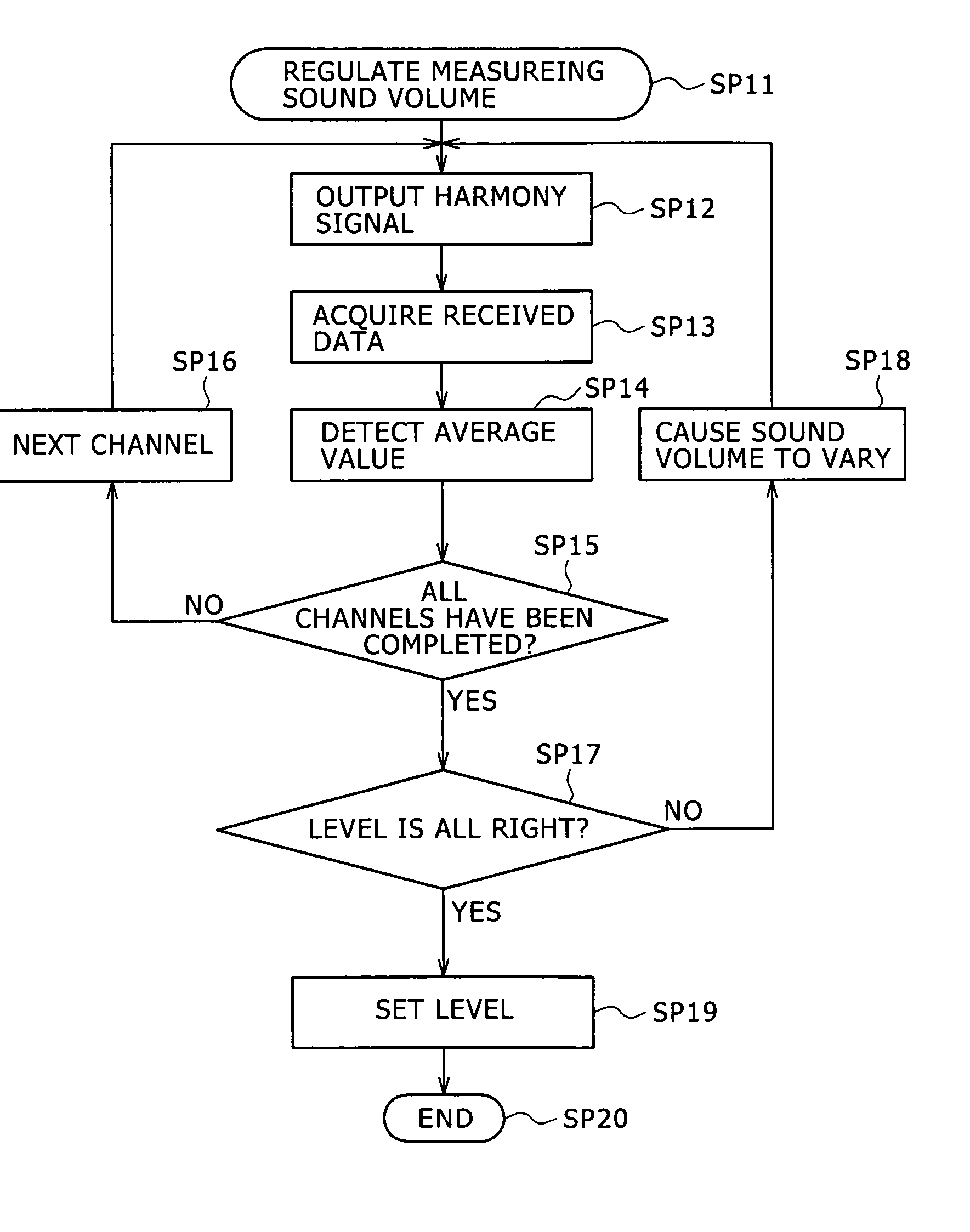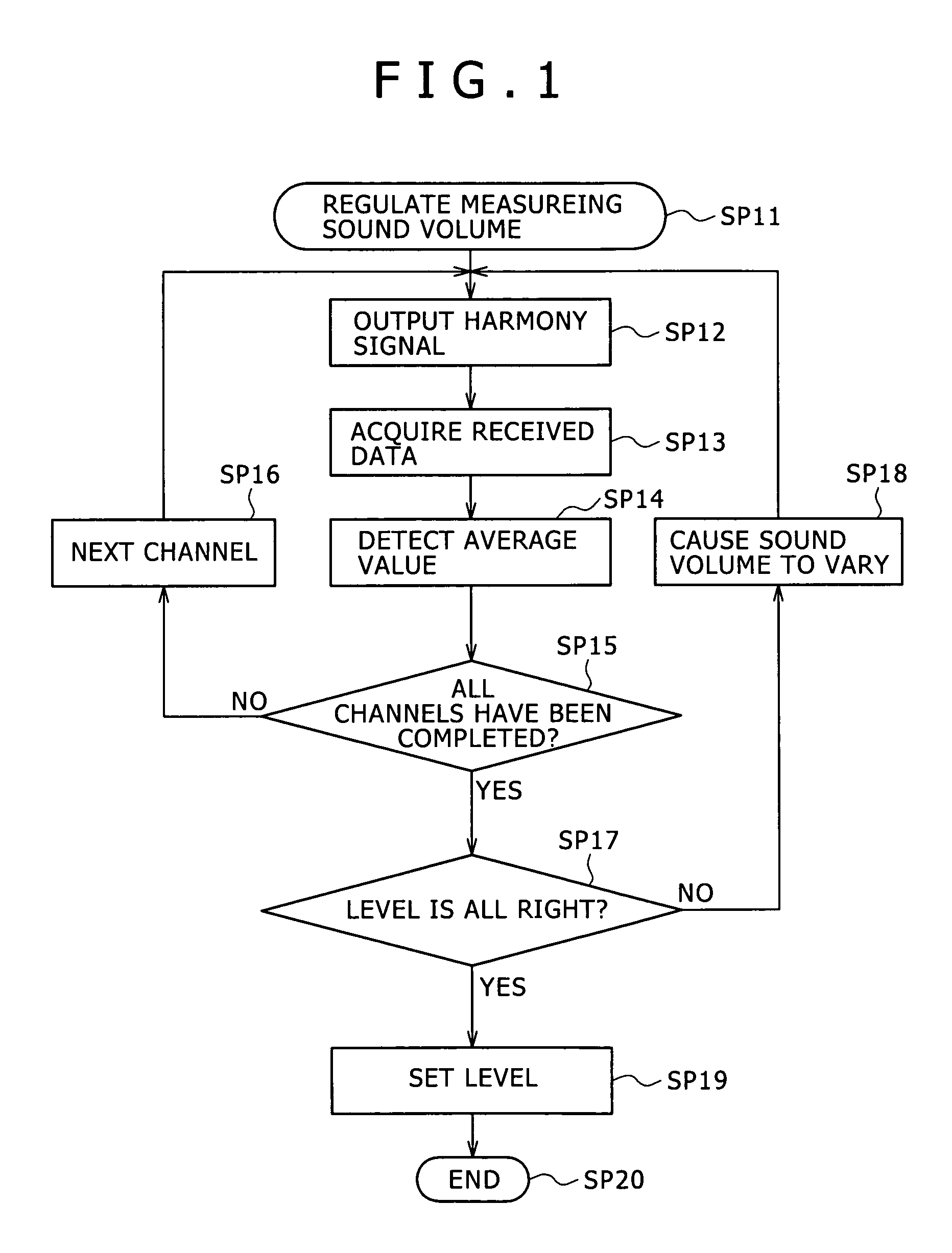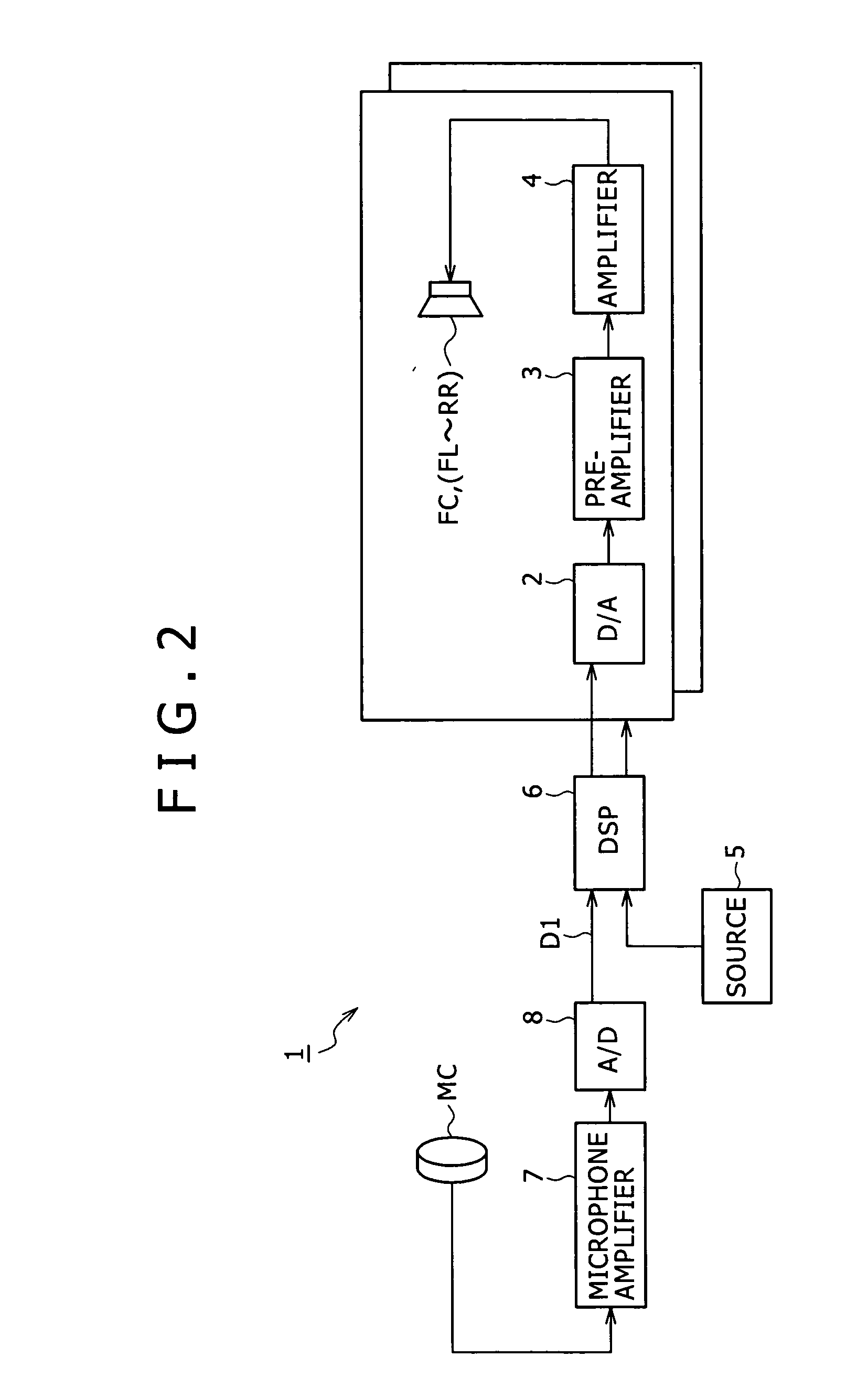Sound field compensating apparatus and sound field compensating method
- Summary
- Abstract
- Description
- Claims
- Application Information
AI Technical Summary
Benefits of technology
Problems solved by technology
Method used
Image
Examples
first embodiment
[0025] (1) Configuration of Embodiment
[0026]FIG. 2 is a block diagram showing an in-vehicle audio system 1 according to a first embodiment of the invention, and FIG. 3 is a plan view showing a speaker system of the in-vehicle audio system 1. The in-vehicle audio system 1 provides a user with music contents through 5.1 channels. With reference to FIG. 3, in the in-vehicle audio system 1, a speaker FC corresponding to a front center channel is provided in a front and central portion of a front seat. Speakers FR and FL corresponding to front right and left channels are provided to front right and left doors, respectively. On the rear side, speakers RL and RR corresponding to rear right and left channels are provided to rear right and left doors, respectively. In addition, a subwoofer RC is provided to a rear, central portion of a rear seat. A microphone MC for picking up outputs of the speakers FC, FL, FR, RL, and RR is disposed near a portion where the head of a driver is placed on a...
second embodiment
[0056] In a second embodiment, the sound-volume regulating test signal according to the first embodiment described above is used also for the connection-verifying test signal described above in conjunction with step SP2 shown in FIG. 4. Further, also in the connection-verifying process, the frequency of the test signal is shifted in conjunction with shifting of the drive system for the speaker.
As such, the above-described processes of steps SP2 and SP3 shown in FIG. 4 can be synchronously executed.
[0057] According to the second embodiment, the sum signal representative of the sum of single-frequency sinusoidal wave signals whose frequencies are set to the relationship of an integer ratio used for the connection-verifying test signal. Thereby, the configuration of the digital signal processor 6 can be simplified.
Further, driving of the speaker by using the connection-verifying test signal can be implemented without being recognized by the user.
third embodiment
[0058] The first, although second embodiment has been described with reference to the case where the invention is adapted to the 5.1-channel audio system, the invention is not limited thereto. The invention can be widely adapted to multichannel audio systems with various other numbers of channels.
[0059] Further, although the first, second embodiment has been described with reference to the case where the frequency characteristics and delay times of the plurality of channels are collectively regulated by the digital signal processor, the invention is not limited thereto. The invention can be widely adapted even to the case where the regulation is executed in units of the channel.
[0060] Further, although the first, second embodiment has been described with reference to the case where the invention is adapted to the in-vehicle audio system and the sound field is compensated for, the invention is not limited thereto. The invention can be widely adapted even to the case where the inven...
PUM
 Login to View More
Login to View More Abstract
Description
Claims
Application Information
 Login to View More
Login to View More - R&D
- Intellectual Property
- Life Sciences
- Materials
- Tech Scout
- Unparalleled Data Quality
- Higher Quality Content
- 60% Fewer Hallucinations
Browse by: Latest US Patents, China's latest patents, Technical Efficacy Thesaurus, Application Domain, Technology Topic, Popular Technical Reports.
© 2025 PatSnap. All rights reserved.Legal|Privacy policy|Modern Slavery Act Transparency Statement|Sitemap|About US| Contact US: help@patsnap.com



